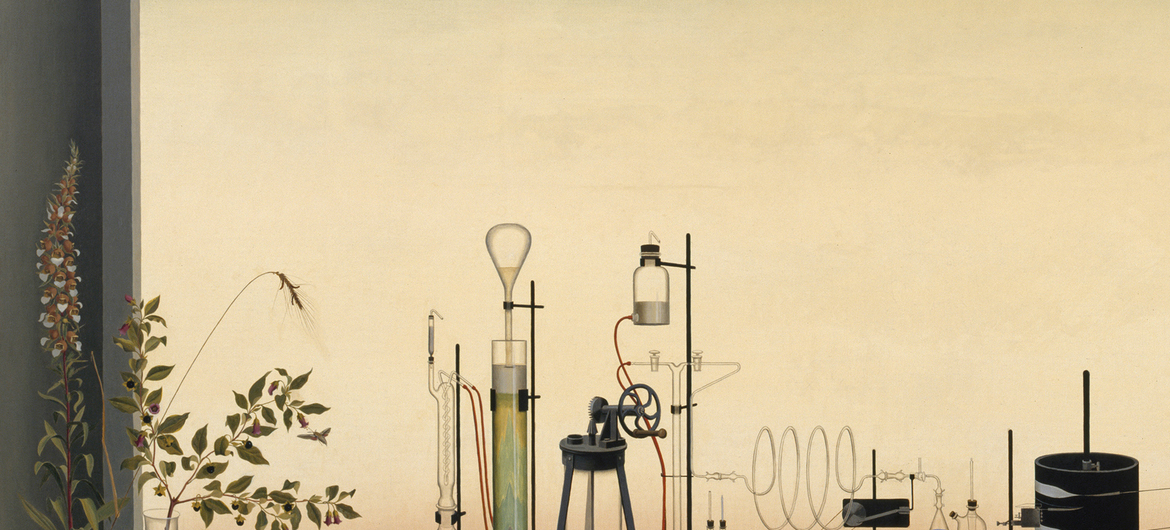Year: 1940
Material/Technique: Oil on canvas
This large painting by Swiss painter Niklaus Stöcklin was originally commissioned by Arthur Stoll, founder and director of the pharmaceutical division of Sandoz AG, with the aim to illustrate the different stages and elements of drug development. From the raw plants on the left to the laboratory equipment in the center and the packaged pills on the right, the entire production chain was represented. The small blue textbook in the middle of the picture is a text written by Stoll himself. On the background the light of the rising sun gives the picture a surreal, almost magical atmosphere.
Artist
The son of a middle-class Swiss merchant, Niklaus Stoecklin grew up in his native Basel, developing a propensity for art at home. From his grandfather, an entomologist and illustrator of scientific publications, he inherited a passion for observation and the analytical transposition of flora and fauna into drawing. From April to August 1914 he studied applied art in Munich. When the war broke out, he returned to Basel, where he began to attend the Academy of Fine Arts; he staged his first solo show of paintings and graphic works in 1915.
The period from 1917 to 1919 was one of training and experimentation. Stoecklin became intrigued by the late Gothic masters and worked in close contact with the Expressionists painters, drawing inspiration from their works. In 1918 he was one of the promoters of Das Neue Leben (The New Life), a Basel art group, participated in its discussions about Cubism and Futurism.
He began to be successful during this period and became an early exponent of the Neue Sachlichkeit (“New Objectivity”) movement. He often exaggerated the features of his subjects, using less precise brushwork and putting greater emphasis on gesture and/or expressive color. More recognized for his graphic art, Stoecklin was a prodigious creator of advertising graphics and book illustrations; as a professor at the Schule für Gestaltung (School of Design) in Basel, he trained a generation of Swiss graphic designers.
The Kunstmuseum in Winterthur and the Kunsthalle in Basel devoted extensive monographic exhibitions to him, respectively in 1927 and 1928. In the mid-1930s, several public institutions and important companies in Basel, such as Hoffmann-La Roche, commissioned him to design and execute murals. Starting in the 1970s, Stoecklin’s works were presented at international exhibitions devoted to the Neue Sachlichkeit movement.
